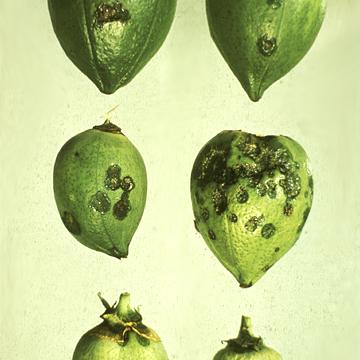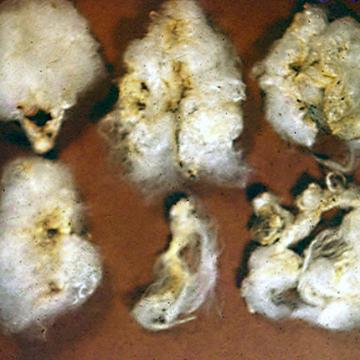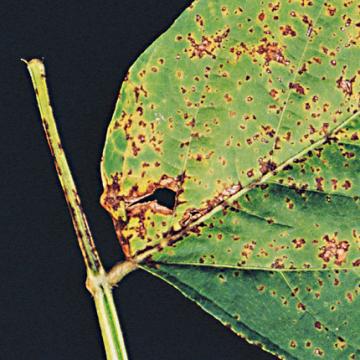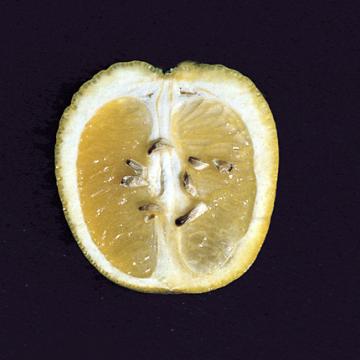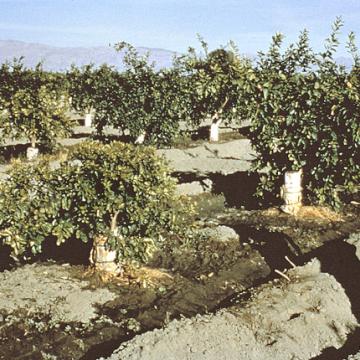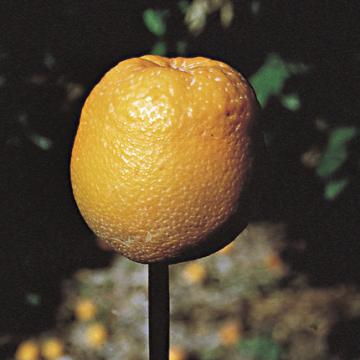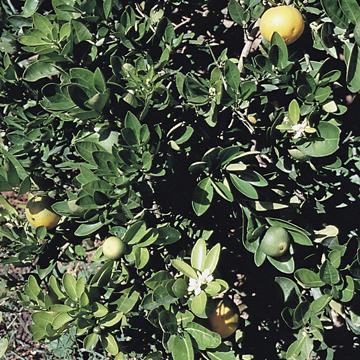DISEASE: Bacterial blight (Boll rot)
HOST: Cotton
Boll rot first appears as raised, water-soaked lesions, which become sunken and turn brown to black with time.
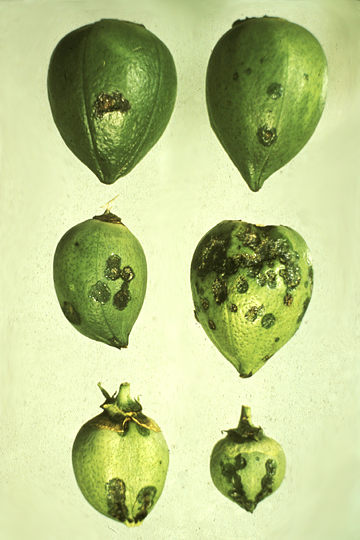
Bacterial blight (Boll rot) | Cotton
DISEASE: Bacterial blight (Boll rot)
HOST: Cotton (Gossypium barbadense)
PATHOGEN: Xanthomonas citri subsp. malvacearum
PATHOGEN SYNONYM: Xanthomonas campestris pv. malvacearum
SOURCE: A. Hayward
DISEASE: Bacterial blight (Boll rot)
HOST: Cotton
Infection of bolls causes premature opening and increased susceptibility to secondary, saprophytic microorganisms that cause rot. Note discolored cotton.
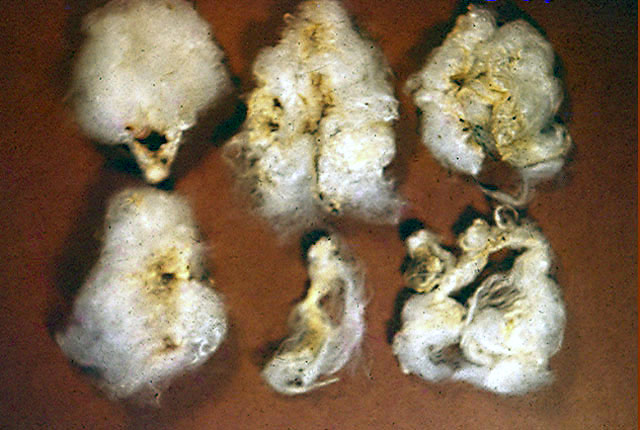
Bacterial blight (Boll rot) | Cotton
DISEASE: Bacterial blight (Boll rot)
HOST: Cotton (Gossypium barbadense)
PATHOGEN: Xanthomonas citri subsp. malvacearum
PATHOGEN SYNONYM: Xanthomonas campestris pv. malvacearum
SOURCE: APS
DISEASE: Bacterial pustule
HOST: Soybean
Early symptoms are minute, pale green spots on young leaves. Later, small pustules form in the center of spots, best observed on underside of leaves. Spots vary in size and darken with age and lesions coalesce. Dead areas are torn away by wind.
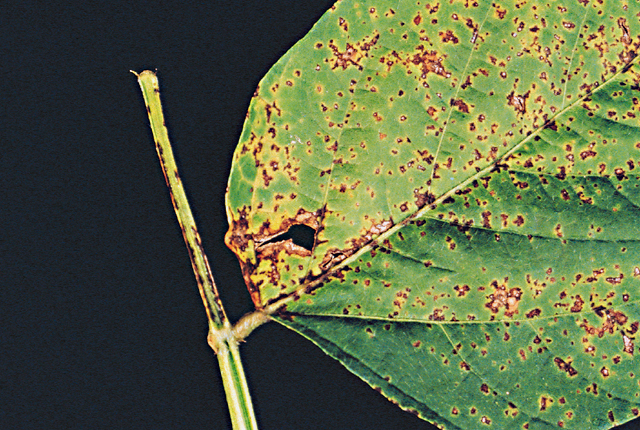
Bacterial pustule | Soybean
DISEASE: Bacterial pustule
HOST: Soybean (Glycine max)
PATHOGEN: Xanthomonas axonopodis pv. glycines
PATHOGEN SYNONYM: Xanthomonas campestris pv. glycines
SOURCE: APS
DISEASE: Citrus stubborn disease
HOST: Citrus (sp. unknown)
Characteristic symptoms of thickened peel at peduncle end and aborted seeds.
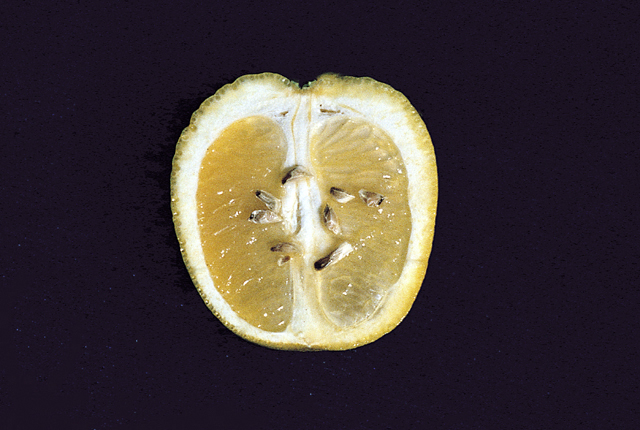
Citrus stubborn disease | Citrus (sp. unknown)
DISEASE: Citrus stubborn disease
HOST: Citrus (sp. unknown) (Citrus sp.)
PATHOGEN: Spiroplasma citri
SOURCE: APS
DISEASE: Citrus stubborn disease
HOST: Citrus (Orange)
Severely stunted sweet orange tree. Foliage is dense and abnormally upright. Leaves may be cupped and unusually thick. They also may be chlorotic and mottled.
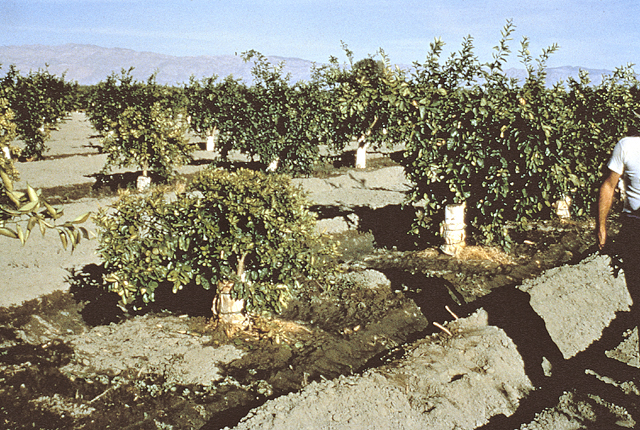
Citrus stubborn disease | Citrus (Orange)
DISEASE: Citrus stubborn disease
HOST: Citrus (Orange) (Citrus sinensis)
PATHOGEN: Spiroplasma citri
SOURCE: S. M. Garnsey
DISEASE: Citrus stubborn disease
HOST: Citrus (Orange)
Fruit from a diseased tree are frequently lopsided or acorn-shaped, usually few and small. They may not color at stem end.
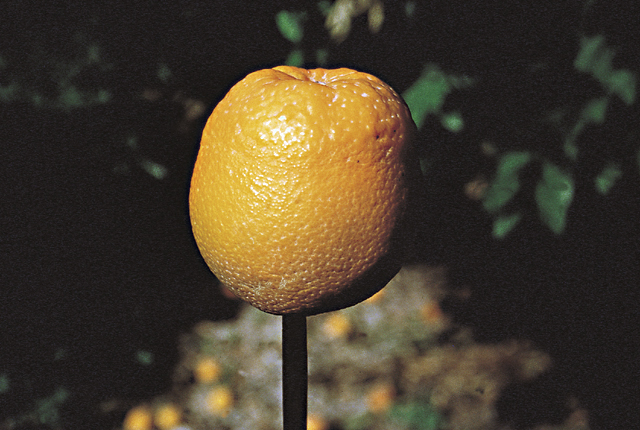
Citrus stubborn disease | Citrus (Orange)
DISEASE: Citrus stubborn disease
HOST: Citrus (Orange) (Citrus sinensis)
PATHOGEN: Spiroplasma citri
SOURCE: J. M. Bove, M. Garnier
DISEASE: Citrus stubborn disease
HOST: Citrus (Orange)
Sweet orange exhibiting off-season flowering and crop heterogeneity. Diseased trees generally have shoots with shortened internodes, which lead to rosettes with cupped leaves.
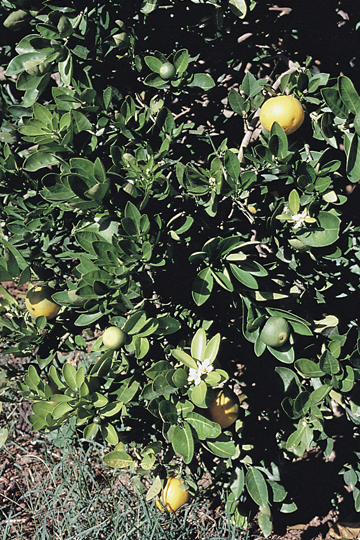
Citrus stubborn disease | Citrus (Orange)
DISEASE: Citrus stubborn disease
HOST: Citrus (Orange) (Citrus sinensis)
PATHOGEN: Spiroplasma citri
SOURCE: J. M. Bove, M. Garnier


